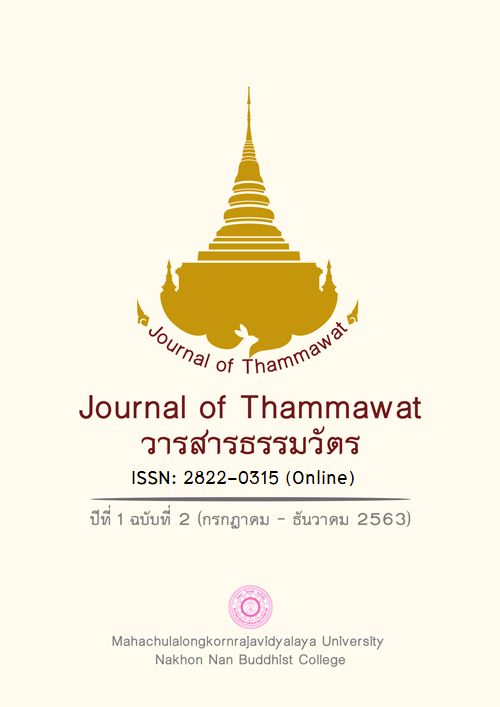Life after death
Main Article Content
Abstract
Life after death, in the Buddhist perspective, is a reflection of the beliefs of people who often do not understand the true nature of life and death. This causes them unable to determine right attitude and act to this important matter. However, the way to help them understand about life after death is to let them focus on knowing the self of man from birth, old age, pain and death which reflect the value of the existence of 5 Khandhas (Five Aggregates). These Five Aggregates: Rupa (corporeality), Vedana (sensation), Sanna (perception), Samkhara (mental formations) and Vinnana (consciousness) are major component of Life. So life arises, exists and goes on relying on the assembly of Khandhas. In order to understand life and to lead to the ability to determine right attitude and action on the true nature of human beings, Buddhist principles must be applied to practice for purifying the mind from all kinds of desire.
Article Details

This work is licensed under a Creative Commons Attribution-NonCommercial-NoDerivatives 4.0 International License.
References
ชาย โพธิสิตา. (2563). ชีวิตและความตายในทัศนะของพุทธศาสนา. สืบค้นเมื่อ 21 มิถุนายน 2563. จาก www.nongerun.th.
พุทธทาสภิกขุ. (2548). เรื่องกรรม ในมุมมองของพุทธทาส. กรุงเทพฯ: เพชรประกาย.
พระพรหมคุณาภรณ์(ป.อ.ปยุตโต). (2563). หลักกรรมสำหรับคนสมัยใหม่. สืบค้นเมื่อ [6 กรกฎาคม 2563, จาก htttp://www.openbased. in.th/files/53_0.pdf
พระพรหมโมลี (วิลาศ ญาณวีโร). (2545). กรรมทีปนี. (พิมพ์ครั้งที่ 2.) กรุงเทพฯ: ดอกหญ้า.
พระมหาบุญมี มาลาวชิโร. (2547). พระพุทธศาสนากับความตาย. กรุงเทพฯ: ดอกหญ้า.
พระธรรมปิฎก (ป.อ.ปยุตโต). (2544). พุทธธรรม (ฉบับเดิม). (พิมพ์ครั้งที่ 10). กรุงเทพฯ: ธรรมสภา.


